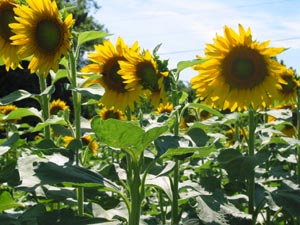
The Pocomoke River WMA's 1,016-acre tract is a mixture of agricultural fields, woodlands, and wetlands located within the Great Cypress Swamp in south central Worcester County. One of nine rivers in Maryland designated as "Wild and Scenic", the Pocomoke winds among bald cypress at their northernmost range, then empties into Pocomoke Sound. As it twists through the Pocomoke River WMA in south central Worcester County, it offers sightings of timid interior dwellers rarely seen in the open.
What To See
Pocomoke River WMA provides habitat for a variety of local and migratory wildlife species including birds, mammals, insects, reptiles and amphibians. Birding, a primary attraction of this WMA, provides a chance to experience the unspoiled wilderness which attracts, sustains and protects so much natural life. Within a radius of just a few miles exist the unique - yet easily accessible - worlds of centuries-old forest, tidal wetlands and secluded fields. Stop anywhere along the road and you'll be able to observe an abundance of birds which inhabit the immediate vicinity. The Pocomoke River WMA is also a herpetologist's paradise, teaming with reptiles and amphibians.
What To Do
Hunters find deer, waterfowl, dove and upland game plentiful. The forest shelters many rare plants and wildflowers as well. Along the river's course, hawks, osprey and bald eagles fish, while wading birds stalk the shoreline. The best way to explore the Pocomoke River WMA is by boat; there are several boat ramps in the Pocomoke City vicinity and in Snow Hill, where canoe rentals also are available. Trails are maintained and suitable for hiking, nature photography, birding, hunting and other recreational activities, but are not actively marked.
Area Regulations
- Use of Pocomoke River WMA is generally permitted seven days a week throughout the year.
- Hunting is allowed in accordance with open seasons and shooting hours, unless otherwise noted.
- All State and Federal Hunting Laws and Regulations are applicable.
- Trapping is by permit only.
- Dove hunting is restricted to certain days and shooting hours.
- No motorized vehicles are allowed.
Non-hunting Users Guide
- Non-hunting visitors are welcome.
- Be aware of open hunting seasons and visit accordingly.
- Season dates available in newspapers, on the Internet, and at some area stores.
- Bird watching is the primary attraction of this area.
- Visitors to the management area should be aware that there may be biting flies, mosquitoes,
and ticks present during April - November.
Site Management Goals
- The agricultural fields are planted with crops to provide habitat and winter food for upland wildlife species
- Certain fields are managed dove hunting areas.
- Some fields have been planted to native warm season grasses, cool season grasses and/or been left fallow to provide habitat for ground nesting wildlife species.

Directions
From U.S. Rte 13, take U.S. 113 north to Pocomoke River WMA. Marked parking areas are located off Rt. 113 south. Access the property by boat via Pocomoke, Snow Hill, Millburn Landing State Park, and Shad Landing State Park public boat ramps. For additional information, contact the Wellington Wildlife Office at (410) 651-2065.
 Click Here for Map
Click Here for Map
This area is a part of Maryland’s Department of Natural Resources public land system and is managed by the Wildlife and Heritage Service. The primary mission of the WMA system is to conserve and enhance wildlife populations and their respective habitats as well as to provide public recreational use of the State’s wildlife resources.
Eighty-five percent of the funding for Maryland's state wildlife programs comes from hunting license fees and a federal excise tax on sport hunting devices and ammunition. The federal aid funds are derived from the Federal Aid in Wildlife Restoration (or Pittman-Robertson) Fund, which sportsmen and women have been contributing to since 1937. Each state receives a share of the funds, which is administered by the U. S. Fish and Wildlife Service; these funds are used for wildlife conservation and hunter education programs, including the management of the WMA system.
Other sources of funds for land acquisition include Program Open Space Funding for Maryland's State and local parks and conservation areas, provided through The Department of Natural Resources' Program Open Space. Established in 1969, Program Open Space symbolizes Maryland's long-term commitment to conserving natural resources while providing exceptional outdoor recreation opportunities.